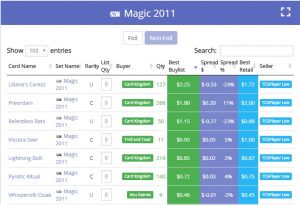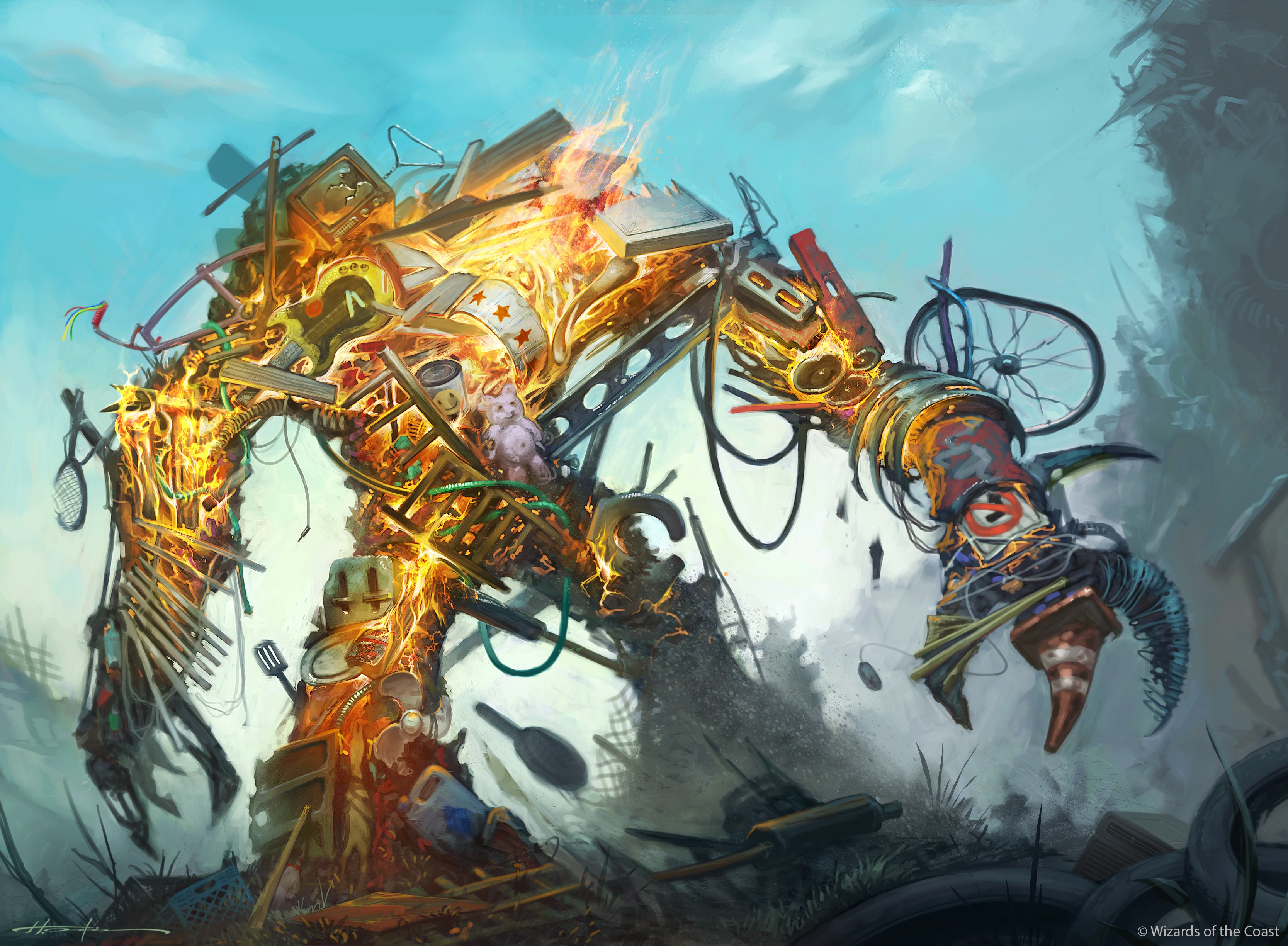Are you a Quiet Speculation member?
If not, now is a perfect time to join up! Our powerful tools, breaking-news analysis, and exclusive Discord channel will make sure you stay up to date and ahead of the curve.
Traders and MTG finance players normally see buying bulk as a fool's errand. This type of buying is reserved only for the largest stores capable of absorbing low margins by having a retail out for even the cheapest cards. The Bulk to Bayou series will illustrate how bulk can be a lucrative MTG finance strategy if executed correctly. This article will outline the advantages of getting into bulk in the first place, based on three main factors as compared to buying collections or speculating:
- Lower Capital Requirements
- Lower Requisite Knowledge
- Less Competition
Low capital costs compared buying and selling full collections
The first advantage of getting into bulk trades is the minimal capital requirement. MTG finance is all about balancing risk versus reward; with a limited bankroll and an event horizon for specs potentially lasting years, the ability to turn over and realize gains to build your bankroll (or collection!) quickly is critical. Aim to minimize risks such as reprints, bannings, and an ever-shifting metagame.
Thus, if your bankroll is small, you need to minimize risk. A couple of busted specs can wipe out your funds while providing no immediate profit. Buying and selling bulk, on the other hand, is much more similar to taking advantage of market efficiencies like a day trader rather than picking a basket of speculative goods.
It's all about building and capitalizing incremental advantage with a high velocity of events that are nearly a sure thing, as opposed to swinging for the fences and hitting it big 10% of the time (i.e. applying the concepts of MoneyBall to MTG finance). Put another way, imagine you find an awesome local collection that will likely provide 2x retail returns in three months with minimal risk but will cost $1000, or a premium spec that as a 75% chance of doubling within the next 12 months.
In theory, both hypotheticals are easy double-up opportunities, but the latter requires a very large bankroll to get started. Potentially tieing up precious operating capital for months, especially in a highly competitive space, creates large exposure to risk (again: reprints, bannings, meta changes, etc). So while a 75% chance at a double-up is a solid investment in a collection or spec, it could take months to mature and return a profit. Moreover, the opportunity to realize those gains over and over is low.
Unlike the examples above, most players are able to scrounge up $50 and take a 90% chance of making a $50 profit in just a couple hours in a bulk collection. Compare the above to a massive bulk collection of 20K cards purchased for $50 and flipped for a $75 profit in a matter of days. Unlike with buying collections, the likelihood of a single or couple cards paying for the entire collection is low, but the likelihood 50-100 cards buylisting for $100 is nearly a sure bet.
In addition, it's much more common to find extract an extra $100 out of a $50 collection (or a 200% ROI) than $2000 out of $1000 collection, based on the simple fact that people are more likely to forget a Triumph of the Hordes in New Phyrexia bulk (600 times the bulk rate) versus a Surgical Extraction in a Modern collection (160 times the bulk rare rate).
Lower knowledge threshold for getting started
Picking bulk with robust background knowledge of Magic's various formats certainly expedites the entire process, but is by no means a requirement of success. Unlike buying full collections wherein the buyer needs a firm grasp of not only the current price, liquidity, and future trends of nearly every card in Magic's history, you must also be able to beat the market and ensure they are not overpaying for the collection at hand.
Instead, buying bulk is based on digging for diamonds in the rough. You do not need to know every card from Magic 2011 that buylists for more than a nickel, just the top five. Given MTG finance's current resource landscape, even the most naive of buyers will be able to pick 80% of the value from a collection of bulk by just picking cards they have heard of before. If you're a QS Insider, it's even easier, as shown below using the Trader Tools to quickly look up the top ten cards in any set.

Less competitive than buying full collections or speculation
The ability to quickly and accurately price cards higher than buylist for stores at a glance is critical when buying full collections, as you have to compete with stores operating on much tighter margins based on having higher volumes.
For example: if a player is selling a collection worth around $1000 based on TCGPlayer Low, you as the buyer need to be able to offer enough above buylist to snag the sale (potentially $750), while still low enough that taxes, shipping, and fees don’t totally obliterate your margins. On top of that, you must also consider the process of selling the cards quickly (maybe $900 before overhead) to minimize risk and turn over capital.
Unlike with buying collections or specs, the thin margins of stores actually works in your favor when buying bulk! Stores have to include taxes, labor, and overhead into the cost of doing business. Thus, the low margins and low value of bulk make buying and selling bulk difficult to pencil out; this holds true for not only online-only stores, but also your local brick and mortar.
The shipping costs of sending bulk adds an additional competitive advantage for small players. Even the stores efficient enough to take advantage of economies of scale struggle to get bulk because it is so prohibitively costed to ship for most players. Most players are unwilling to go through the hassle of shipping bulk to only end up netting $1-2 per thousand cards after shipping costs.
At a local level, the competition in your local market for bulk is likely limited, as the margins are too low for stores and the friction for players is too high to deal with shipping cards across the country for marginal returns.
Summary
All in all, buying and selling bulk is very likely a mostly untapped local market with significant upside, based on limited competition from larger players in the space, low capital requirements, and a gradual learning curve. That said, buying and selling bulk is not without its pitfalls. The low margins that scare away major players mean a few missteps could dry up any profits from the collection. What these pitfalls are and how to avoid them will be explored later in the next part of the series, with in depth guides on buying, picking, sorting, and finally selling bulk. Join me next time for the next installment of Bulk to Bayou!




